- Home
- slideshows
- miscellaneous
- A photographer visited the Chernobyl Exclusion Zone more than 20 times over the past 25 years, and the captivating photos show just how suddenly time stopped in its tracks after the disaster
A photographer visited the Chernobyl Exclusion Zone more than 20 times over the past 25 years, and the captivating photos show just how suddenly time stopped in its tracks after the disaster
Photographer David McMillan told Business Insider that he grew up during the Cold War, when tensions between the United States and the Soviet Union posed potential threats of nuclear war.

"I had this kind of fear," McMillan said of growing up during that time period.
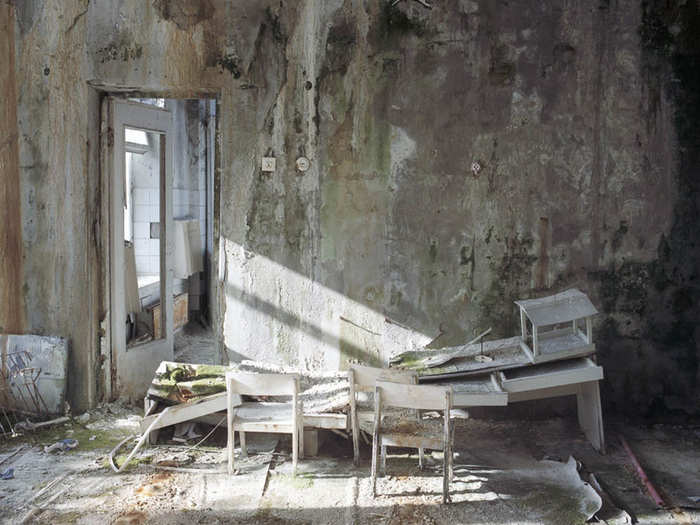
He said he became concerned about the role nuclear weapons could play in political warfare.
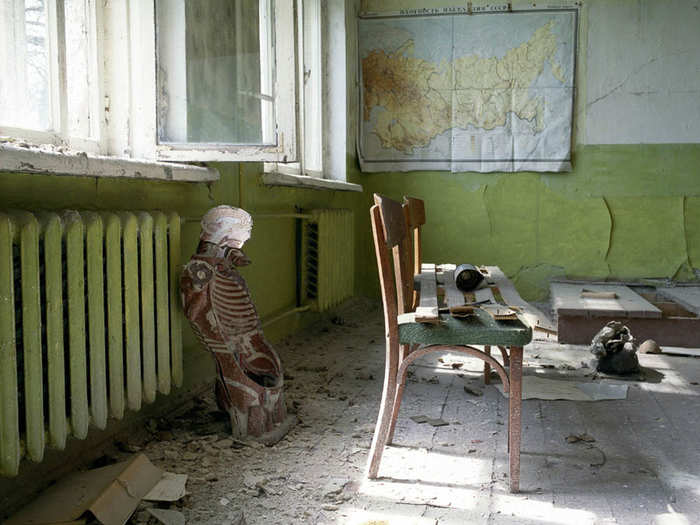
Then, on April 26, 1986, a reactor at the Chernobyl Nuclear Power Plant in Ukraine exploded, shooting out toxic radioactive particles across parts of Europe.

Source: Business Insider
About 350,000 people were evacuated, with most leaving their homes, places of work, and their worldly belongings behind forever.
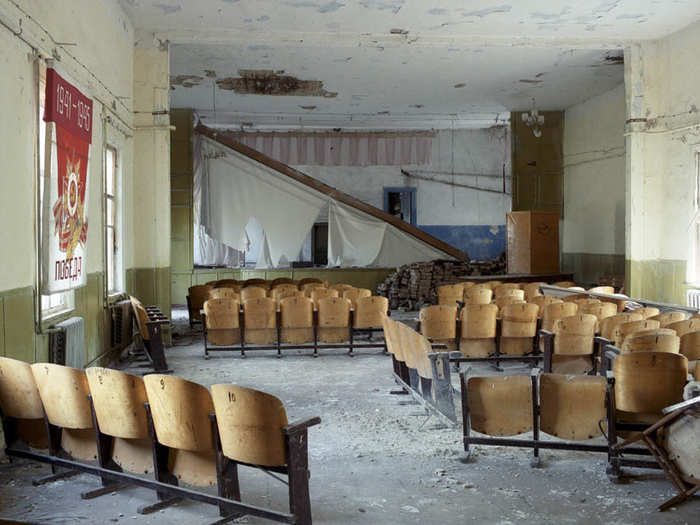
Source: Business Insider
In the years following the disaster, McMillan said he kept up with the news about it, and he eventually decided he had to check it out for himself.
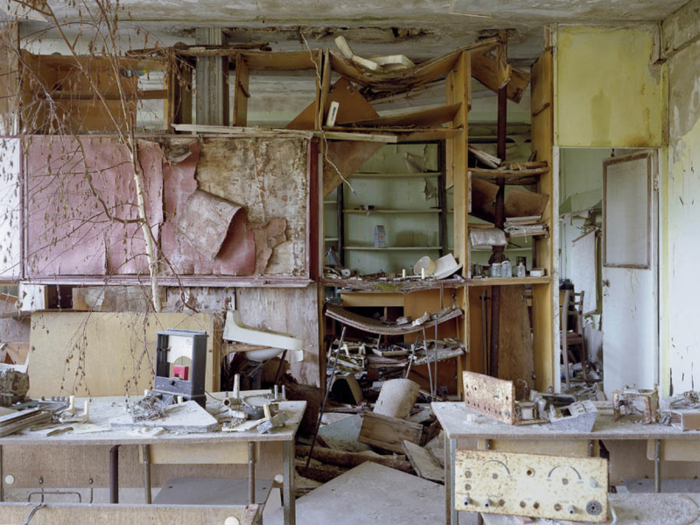
"I was environmentally concerned as a photographer," McMillan said. "This seemed like an obvious place to go."
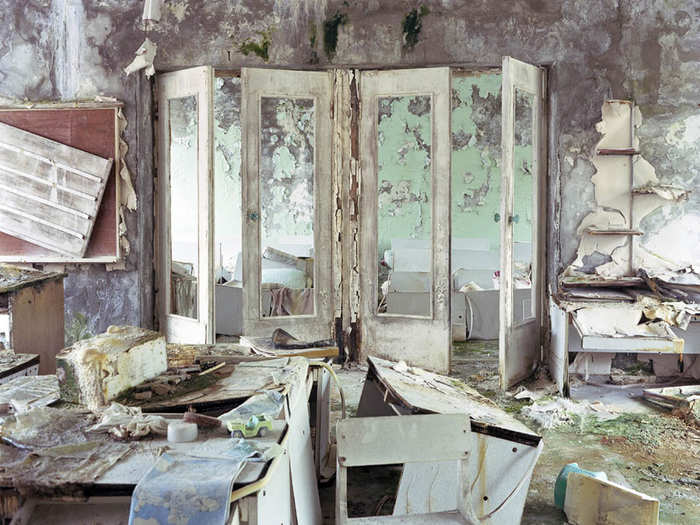
He said he decided to venture to the exclusion zone that was now permanently contaminated to see what the aftermath of a nuclear disaster looked like.
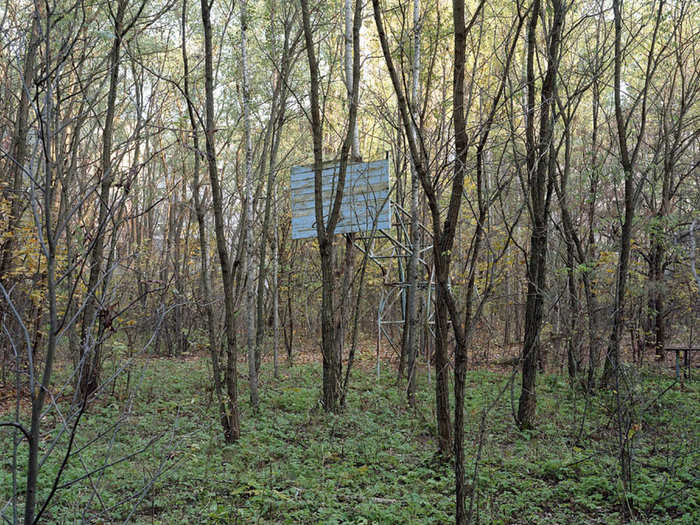
"This place had experienced it," McMillan said. "It wasn't a war, of course — it was an accident — but I wanted to see what would happen to any part of the world if this occurred."
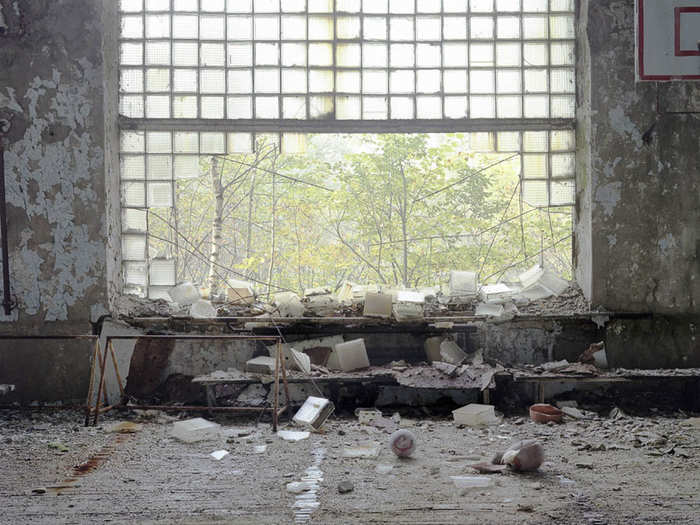
He said he went to the Chernobyl Exclusion Zone for the first time in 1994, eight years after the nuclear meltdown.
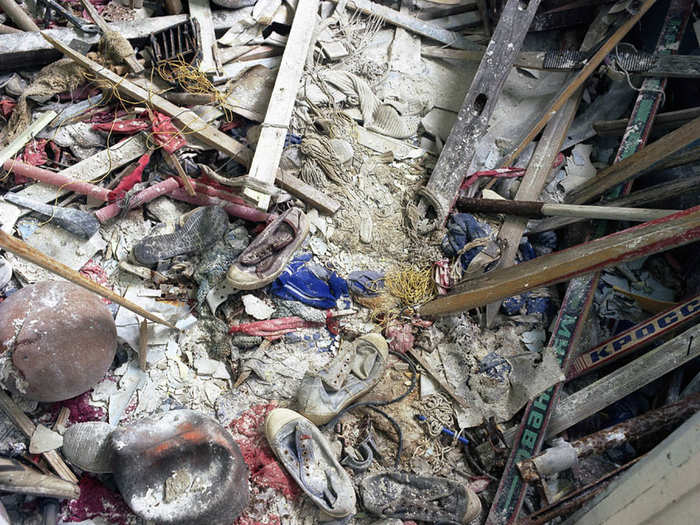
He said he started his journey by looking for people who could help get him in and obtaining a visa since, at the time, you needed one to enter Ukraine.
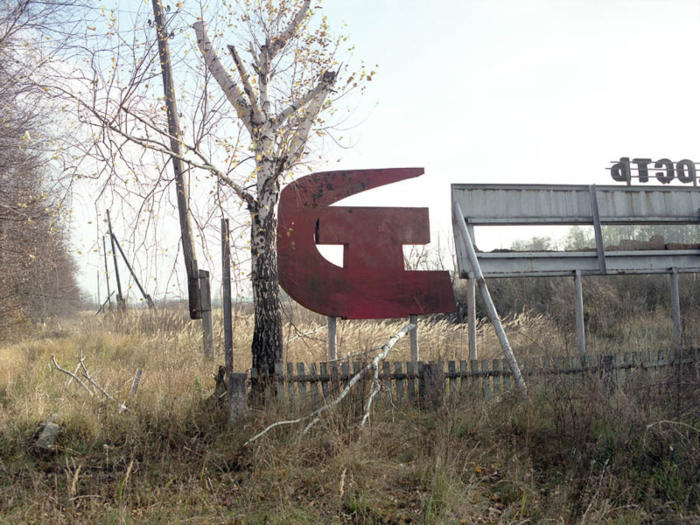
"The most difficult thing was to find someone who knew someone in the exclusion zone," McMillan said.
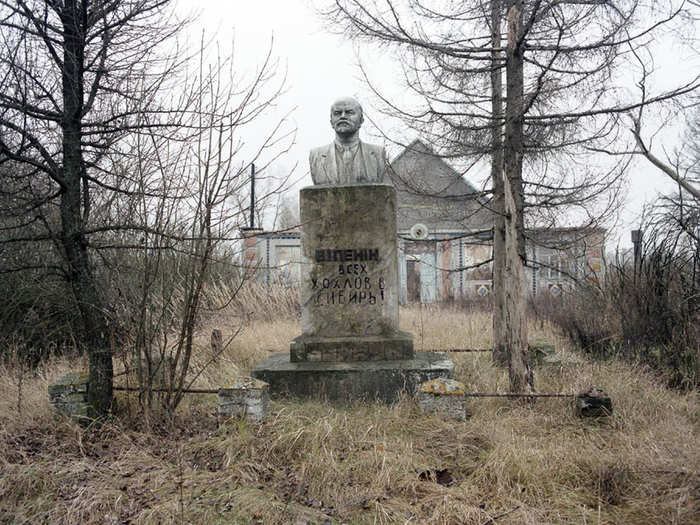
He said he eventually connected with a man who lived in Kiev, the Ukranian capital about 90 miles south of the exclusion zone, who agreed to get him in for a fee.

He said he stayed that first trip for five days with a driver and an interpreter and was allowed to photograph anything he wanted.
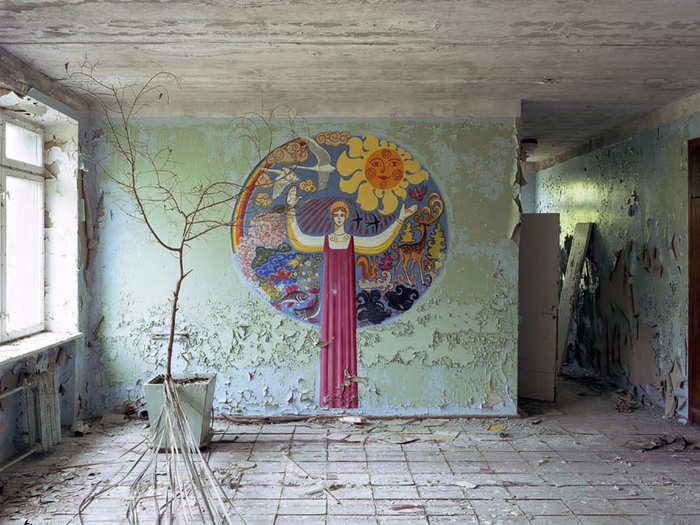
Many of his photos were taken in the city of Pripyat, a city about three miles northwest of the power plant.
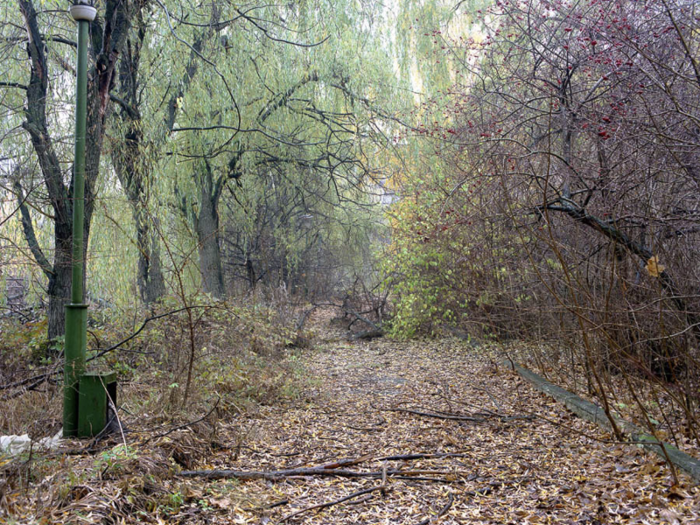
The city was once home to 50,000 people, most of whom worked at the plant, McMillan said.
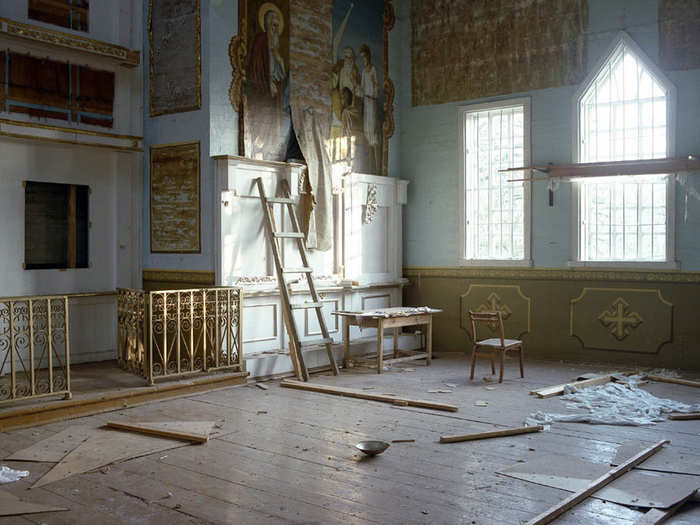
Source: Atlas Obscura
The average age of the city's population at the time was about 26 or 27 years old, McMillan said.
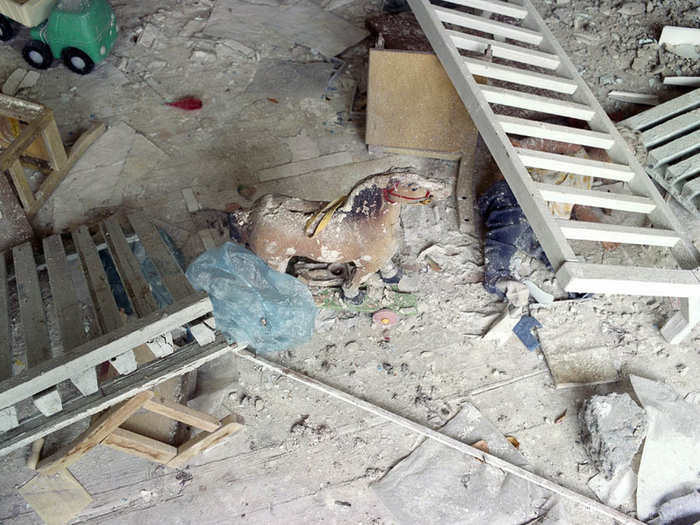
Source: Atlas Obscura
So there were lots of kindergartens, hospitals, and schools, with amenities for entertainment like movie theatres and swimming pools.
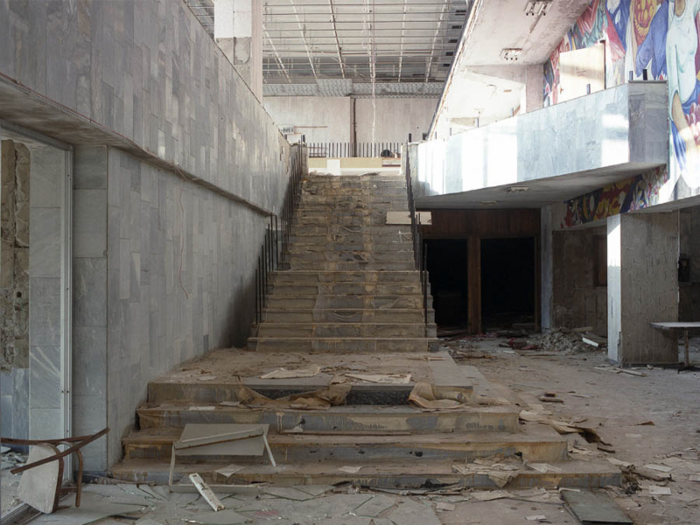
Source: Atlas Obscura
"It was considered a model city for the rest of the Soviet Union," McMillan said. "People wanted to live there."
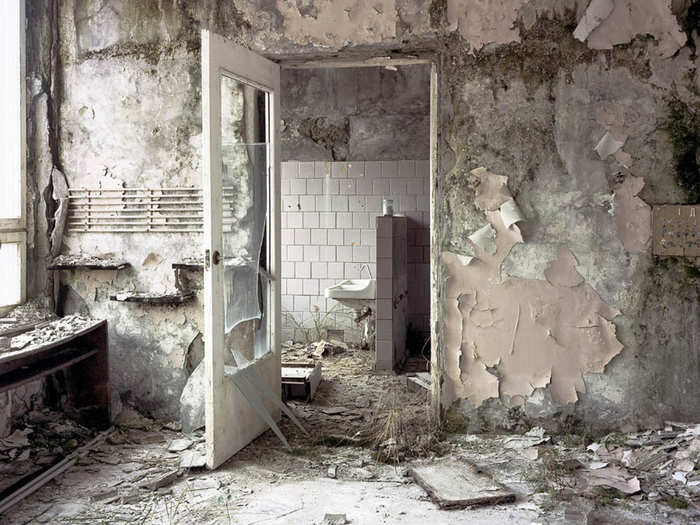
Now those once-glistening establishments are abandoned, deteriorated, and still contaminated, and Pripyat is one of the most unlivable places in the zone, McMillan said.

"Nothing could be salvaged," McMillan said. "It's lost, it's gone."
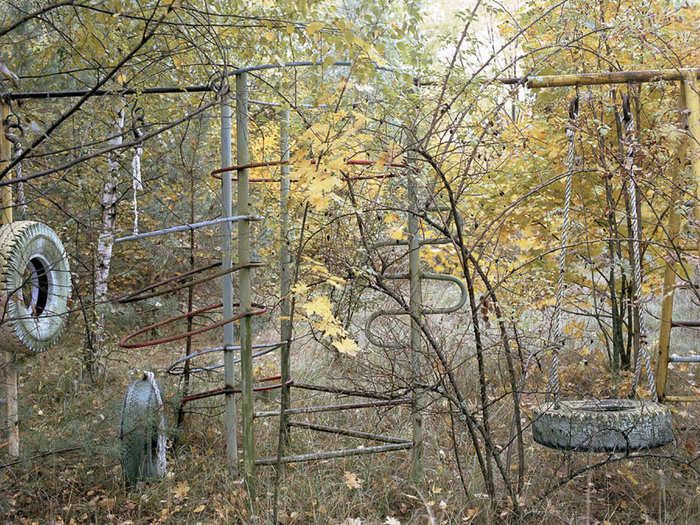
The scenes depicted in the photos eerily show how residents were so quickly evacuated after the explosion in 1986.
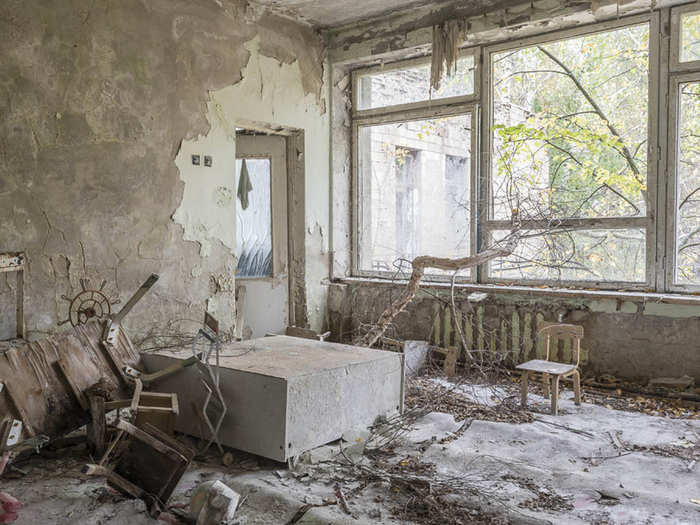
McMillan said they left their furniture, pets, dental and school records, among other items, and were taken to other cities.

Source: History
"They had to essentially start over from zero with all their credentials left behind," McMillan said.
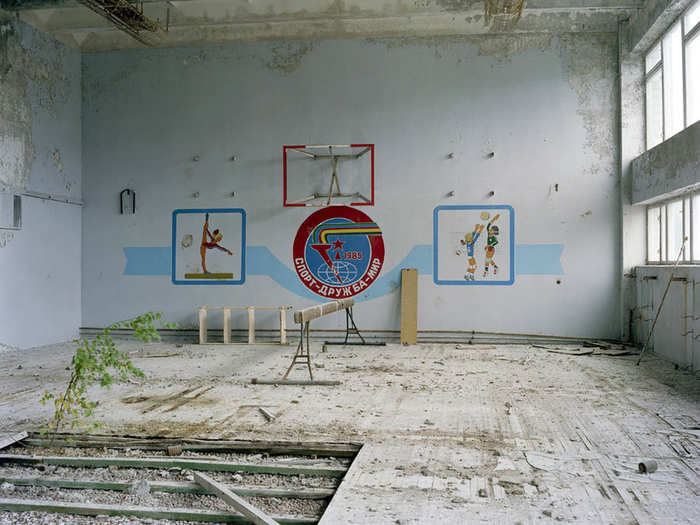
Some of the now-crumbled structures were still being constructed at the time of the accident and were never even used, McMillan said.
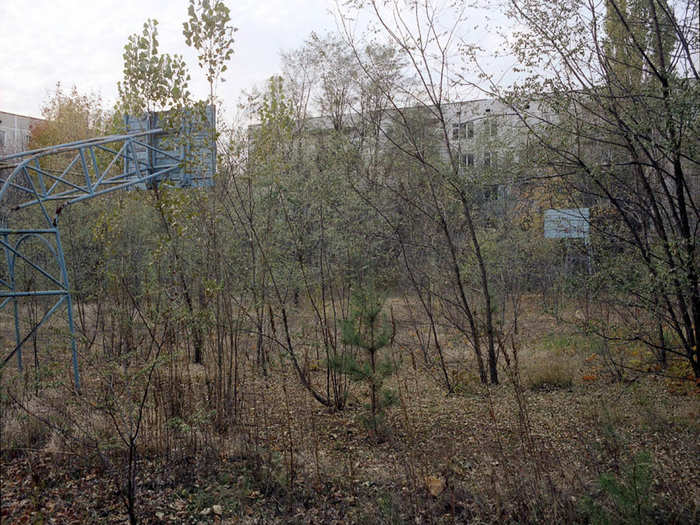
A yellow Ferris wheel was built for May Day, a significant Soviet holiday on May 1, and finished just before the disaster on April 26. "It was never used," McMillan said.
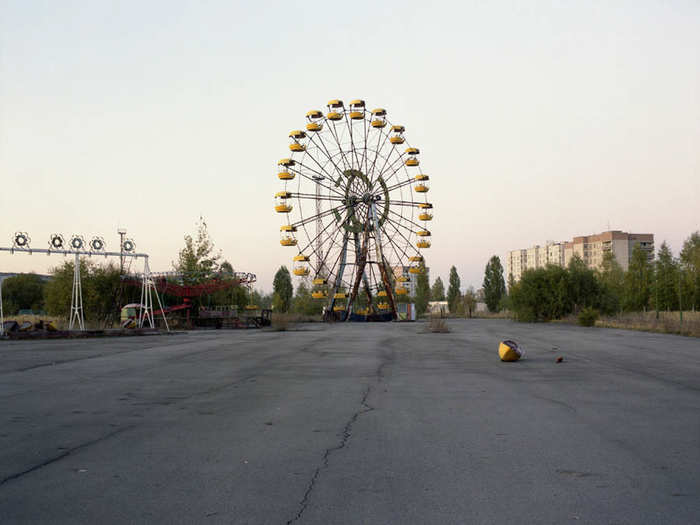
Source: Business Insider
The solitary Ferris wheel is one of many locations that McMillan returned to and photographed over the course of 25 years on more than 20 trips.
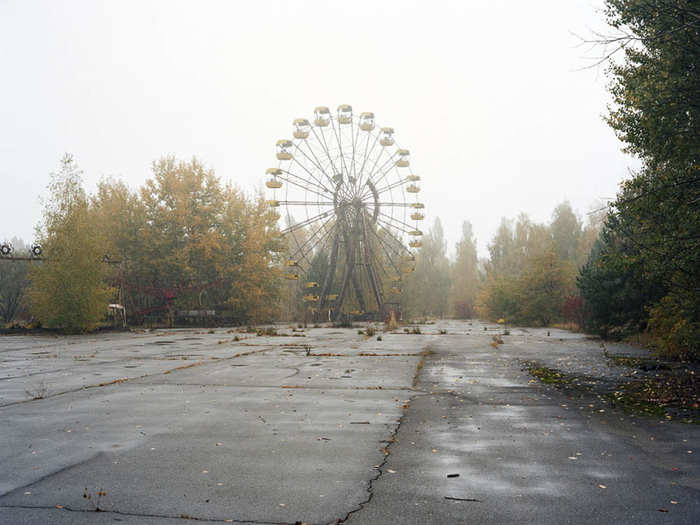
He didn't set out with the intention of photographing the same scenes years apart, but "that just started to happen," McMillan said.
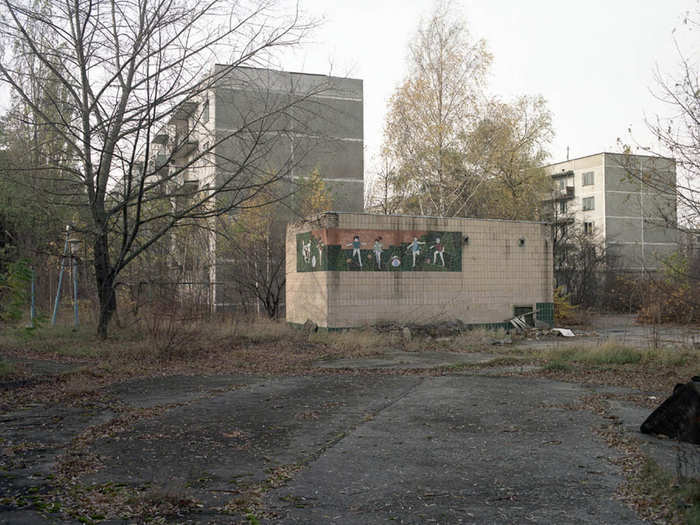
He said he didn't know how freely he would be allowed to travel, but after his first visit, he said he didn't think he'd seen enough and felt like there was more to do.
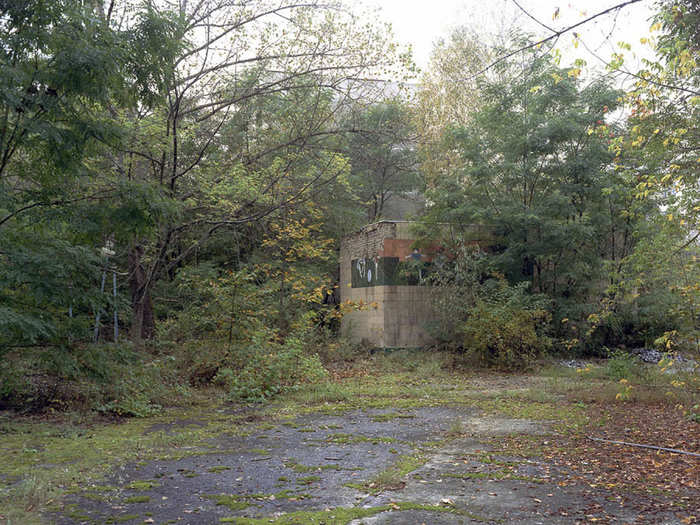
"Maybe it would be interesting to compare what it was once like," McMillan said he thought at the time.
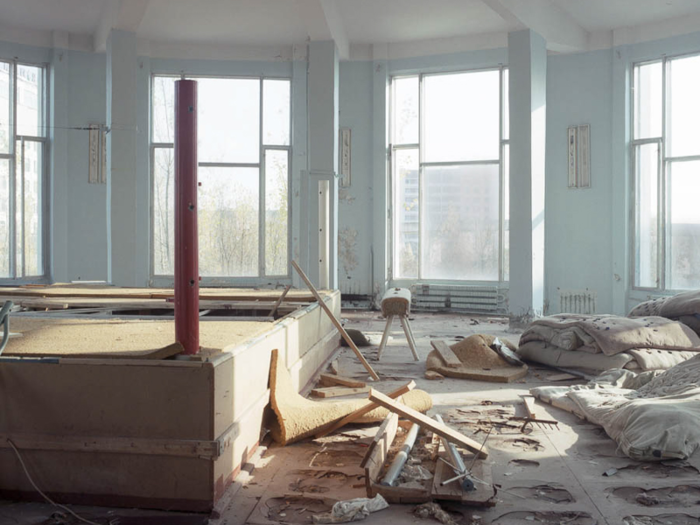
With each visit, the sites he frequented over the years decayed even more. "Things deteriorate pretty quickly," McMillan said.
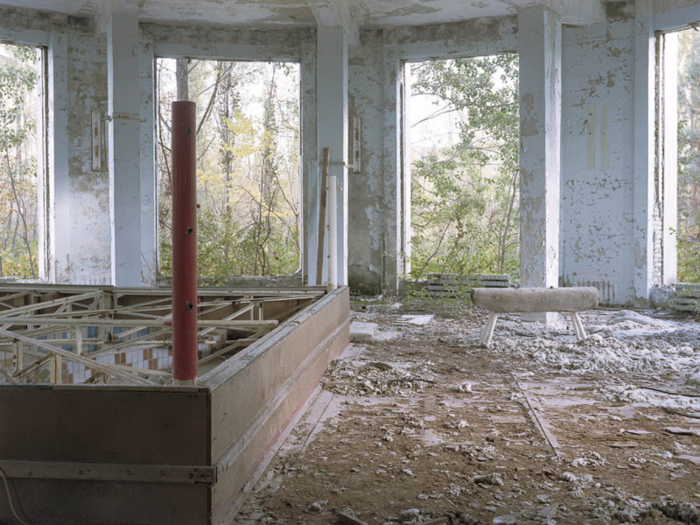
A striking example of that is a series of photos taken in a school hallway of flags representing the countries of the former Soviet Union.
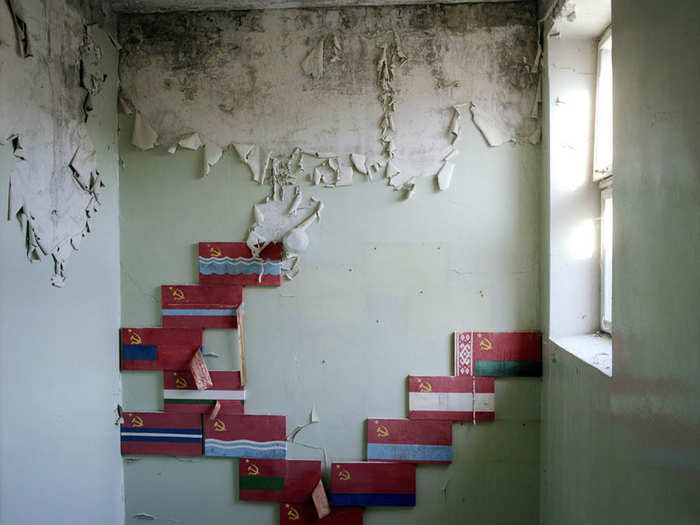
"Over the years, the flags had fallen and become damaged," McMillan said.
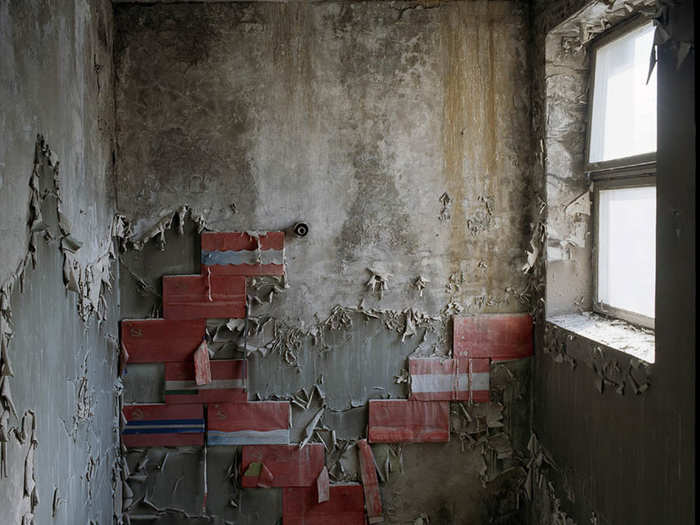
The Soviet Union itself fell apart in 1991, just five years after the Chernobyl nuclear disaster.
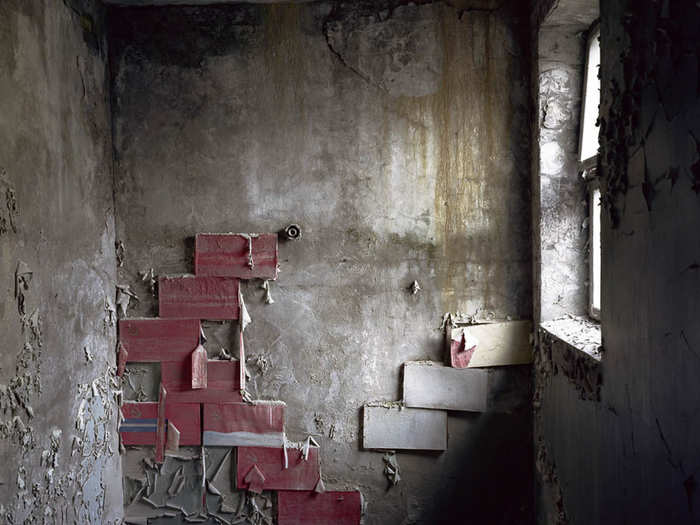
Source: History
In a photo taken in 2012, the flags are no longer recognizable.
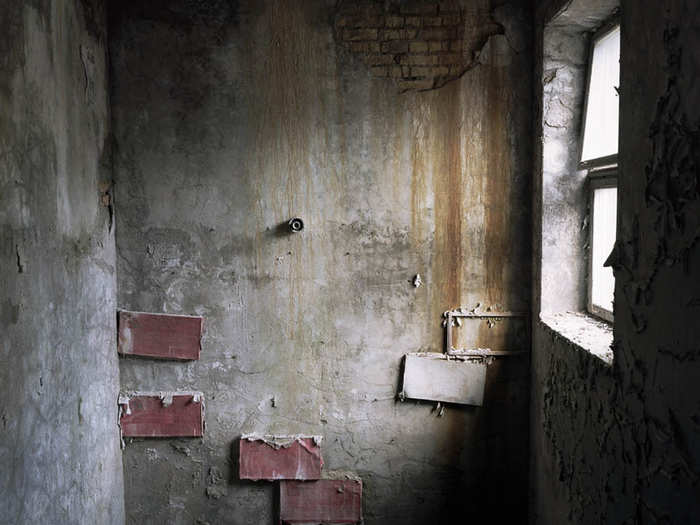
Another sign of Pripyat's Soviet history is a photo taken by McMillan in 1997 of a portrait of Vladimir Lenin, founder of the Russian Communist Party.
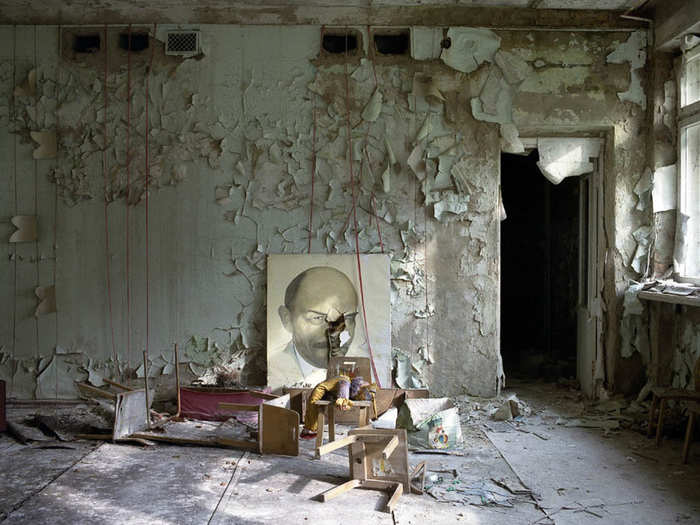
Source: Britannica
The portrait is also unrecognizable in a photo taken in 2009.
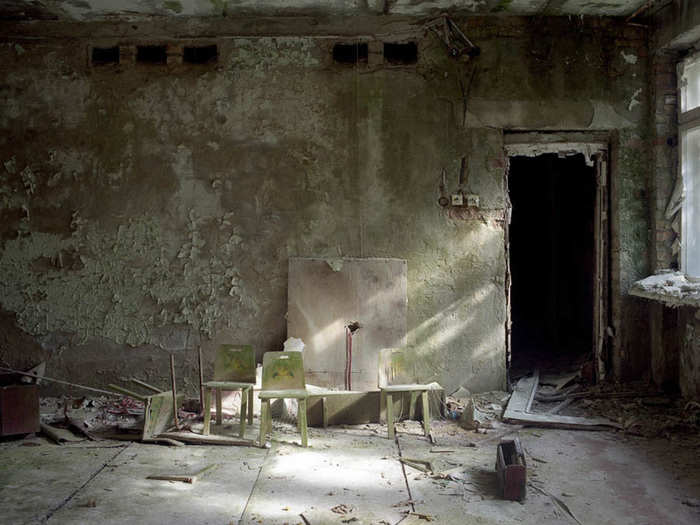
Other photos show the many facilities that Pripyat residents had access to, like swimming pools.
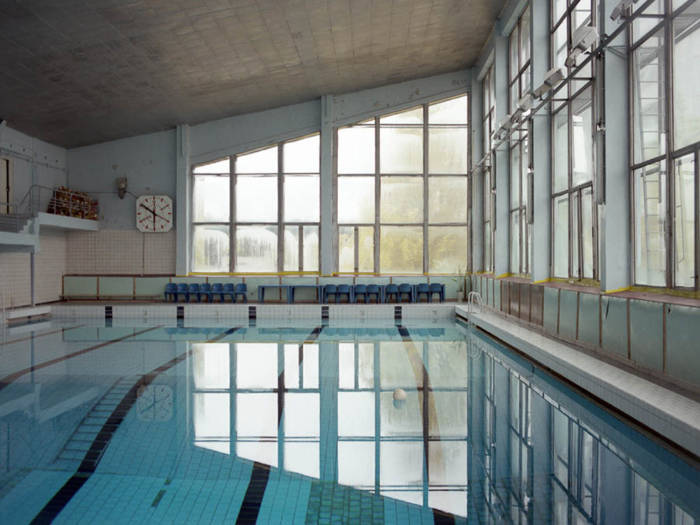
A photo taken seven years later shows the pool completely drained and deteriorating.
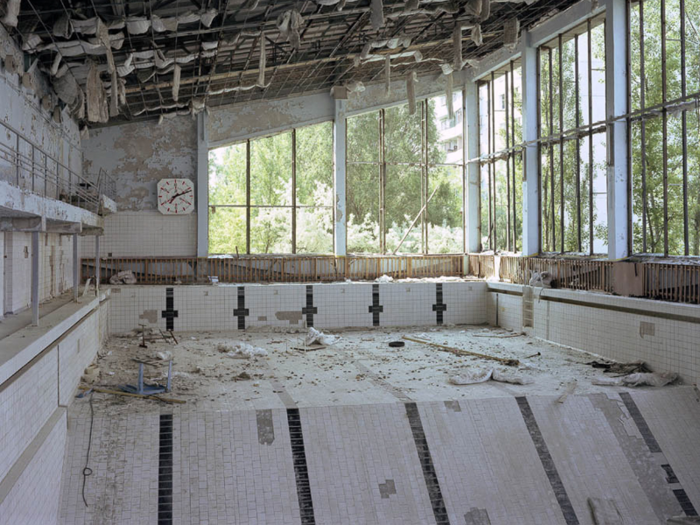
Over time, McMillan said he also noticed the vegetation taking over.
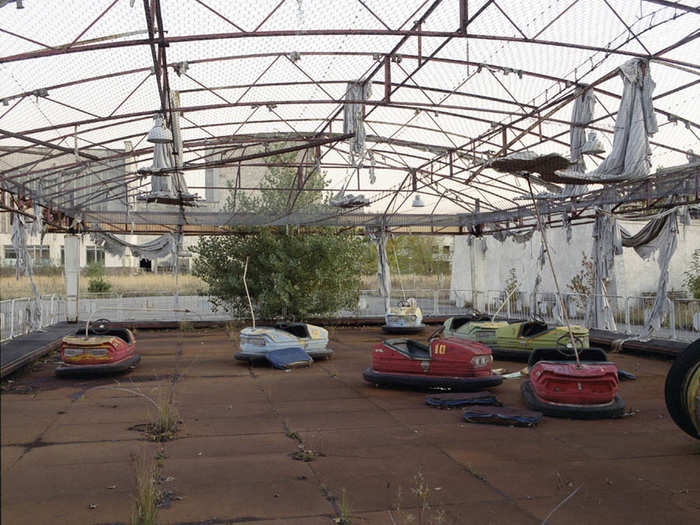
"The buildings decay, and the natural world fills in the void," McMillan told Business Insider.
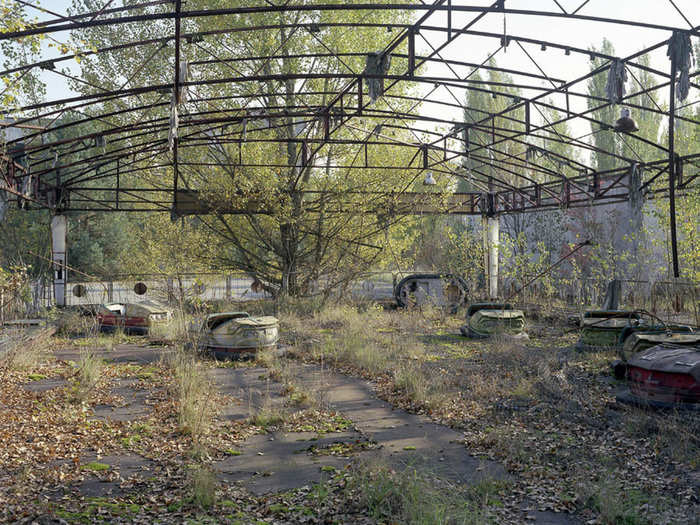
McMillan said he was actually most afraid of buildings collapsing while he was exploring the zone, even more so than the danger posed by radiation.
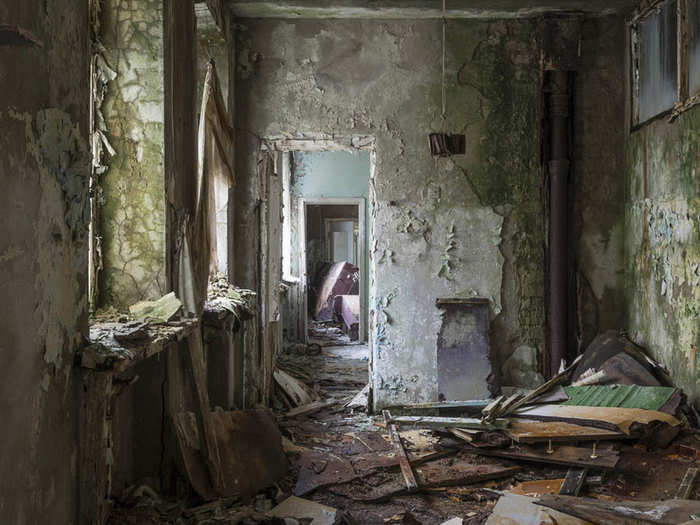
"Some of the buildings, you won't be able to tell if you're inside or outside," McMillan said.
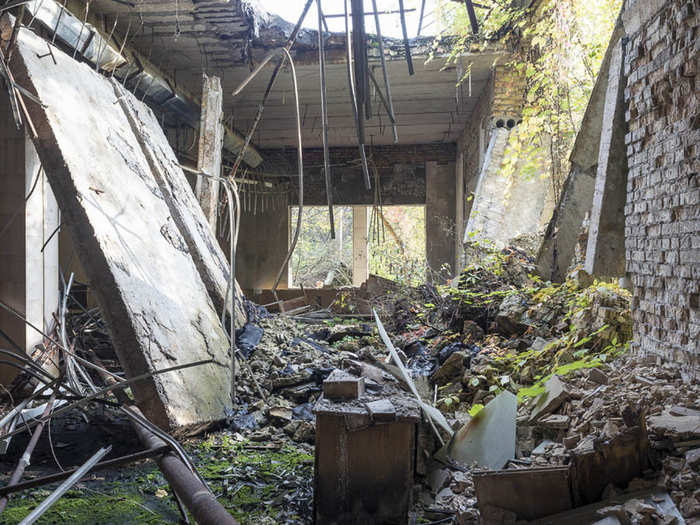
He said it had likely been years since anyone had walked into the buildings he was exploring.
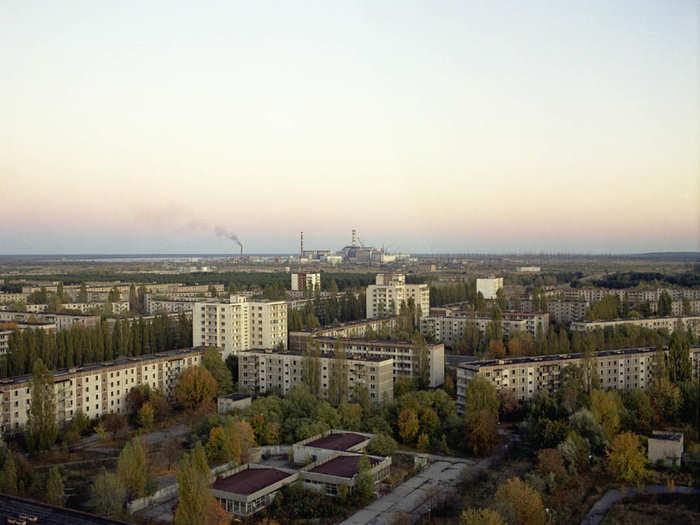
Besides the "Samosely," or self-settlers, that live illegally inside the exclusion zone, no one makes their way into this area.
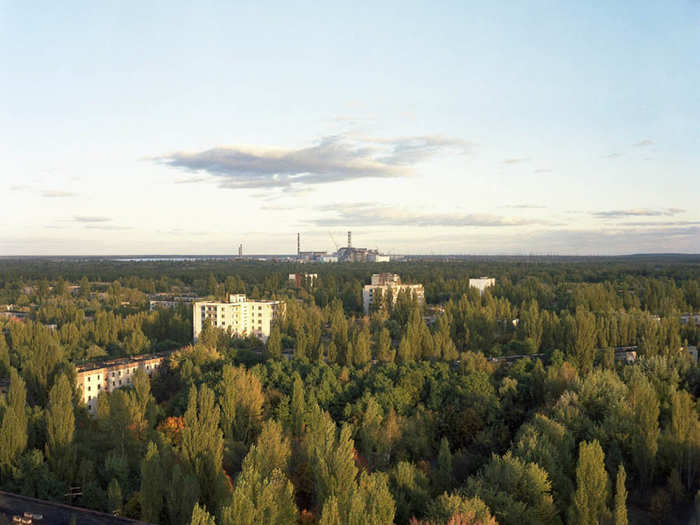
But since 2010, the Chernobyl Exclusion Zone has turned into an unlikely tourist destination, bringing visitors to the site via bus.
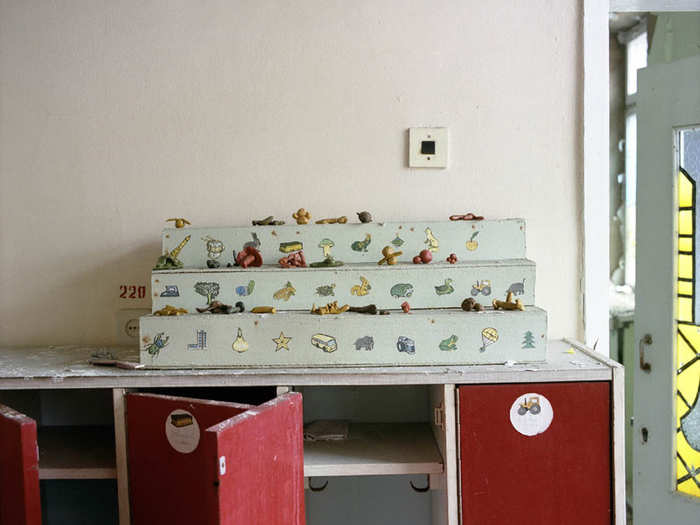
Source: The Guardian
McMillan said they're brought in by small tour companies.
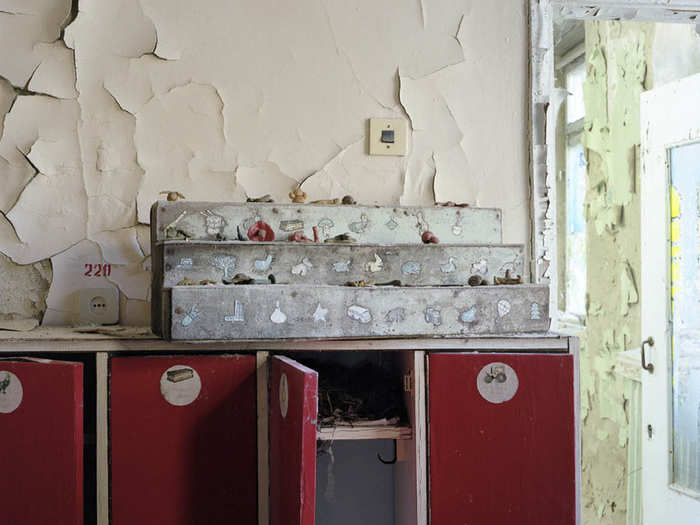
And he said the tour doesn't take them anywhere that isn't considered safe or off the beaten track.
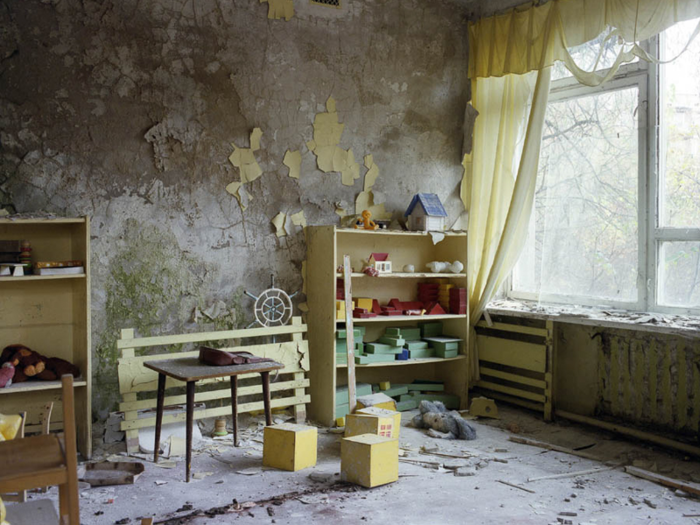
McMillan said the idea of Chernobyl being a tourist destination seems strange to him, but he said he acknowledges that he is also there in an unconventional way.
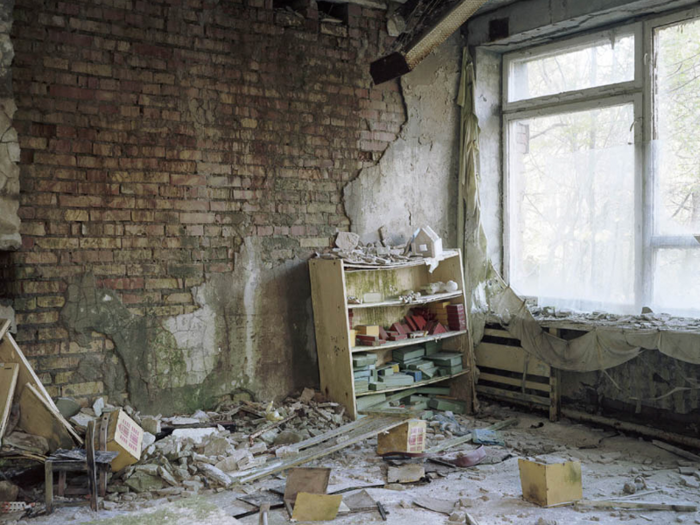
"They're there with their smartphones taking selfies," McMillan said.
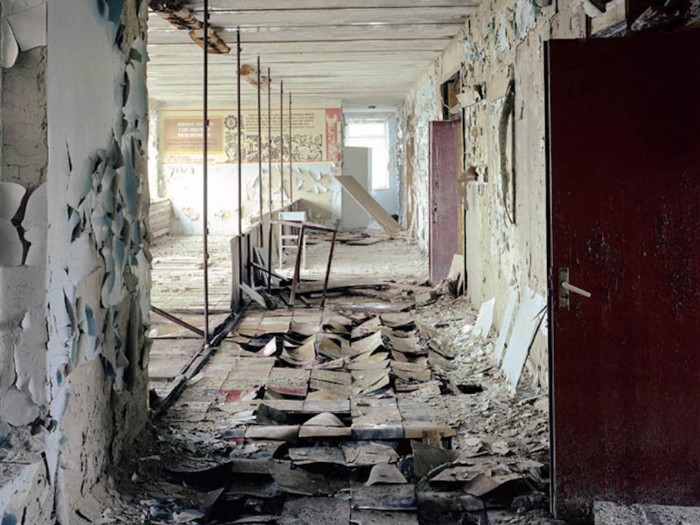
McMillan said the tourists pay a fee to get in.
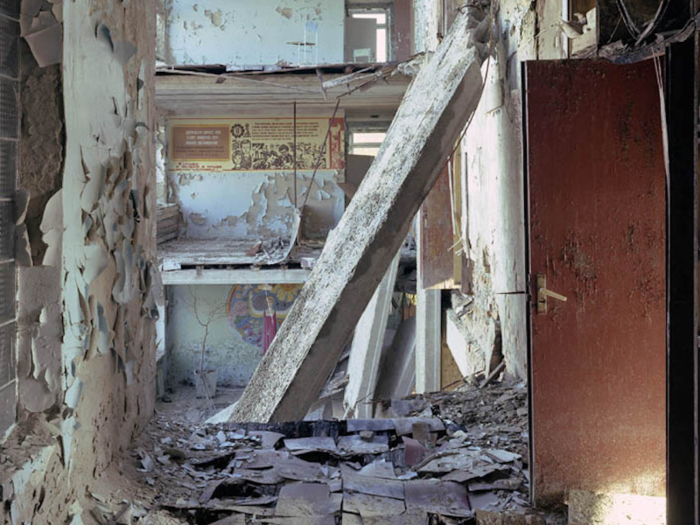
"People seem to want to do it, and it's become a source of income for a lot of people," McMillan said.
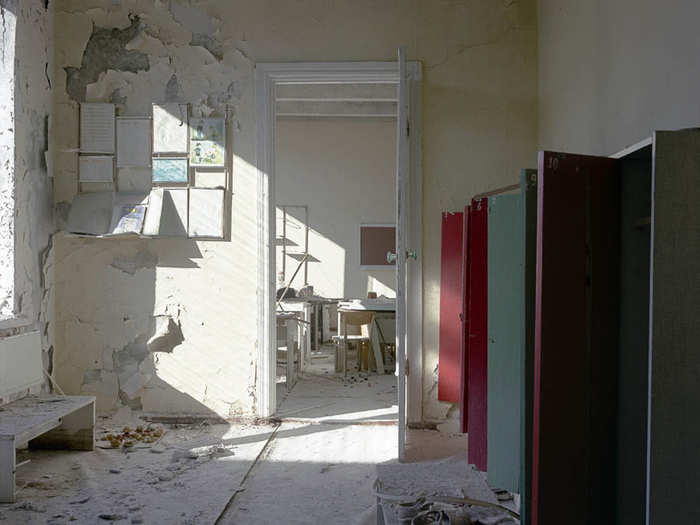
The radiation levels obviously don't stop the tourists from visiting.
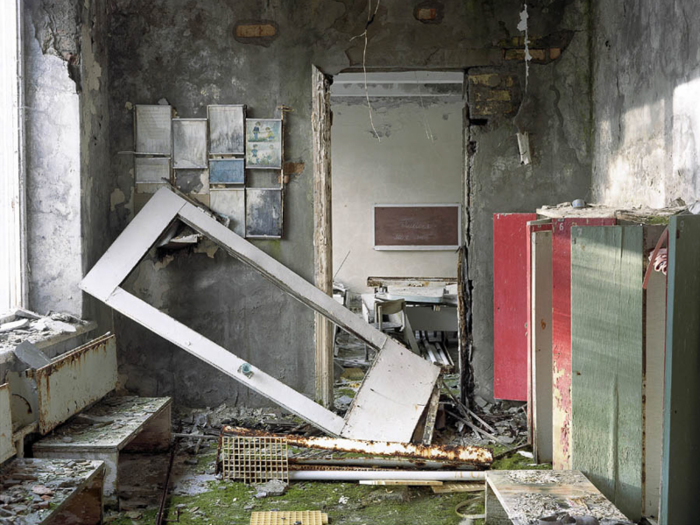
And neither do they stop McMillan, who said he doesn't have any health issues from his time spent in the exclusion zone.
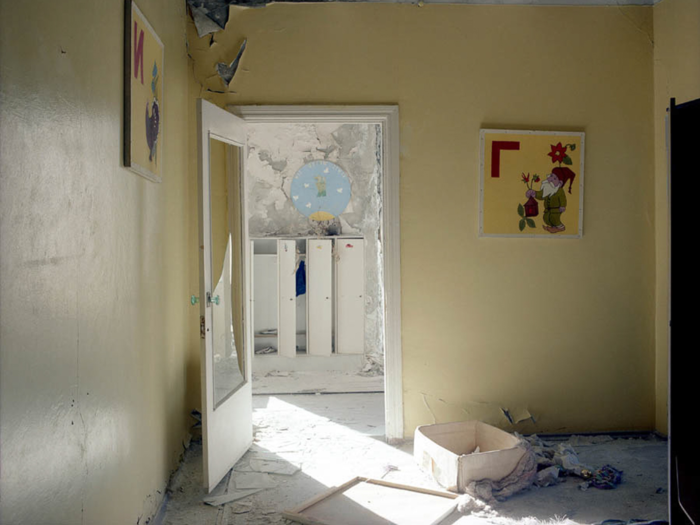
"As far as I know, I'm fine," McMillan said.
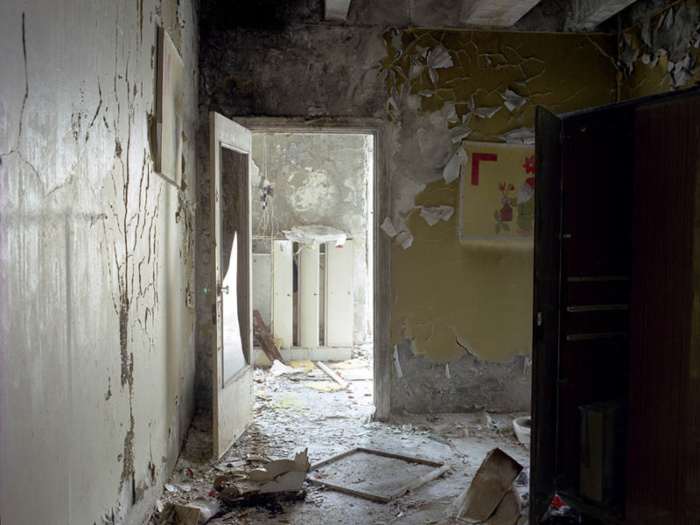
He said he has learned from his experience traveling to and photographing what was left of society in the zone.
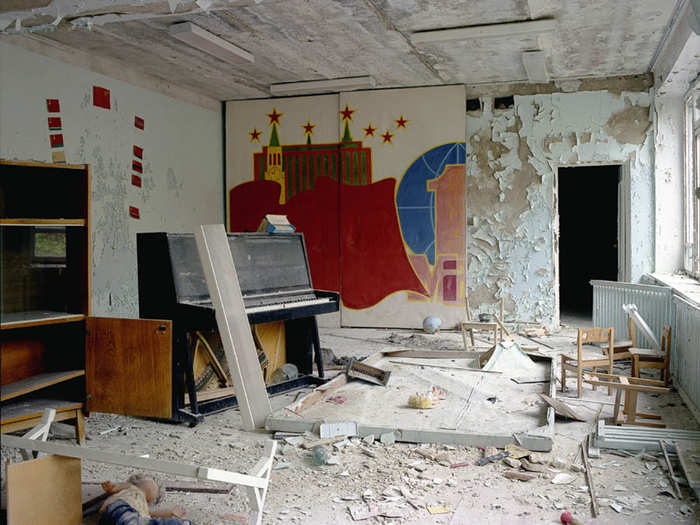
"You become grateful for the life you have," McMillan said.
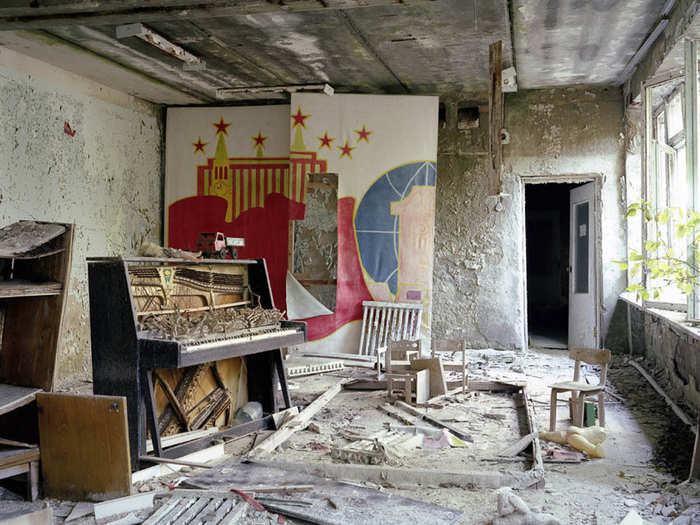
Popular Right Now
Popular Keywords
Advertisement